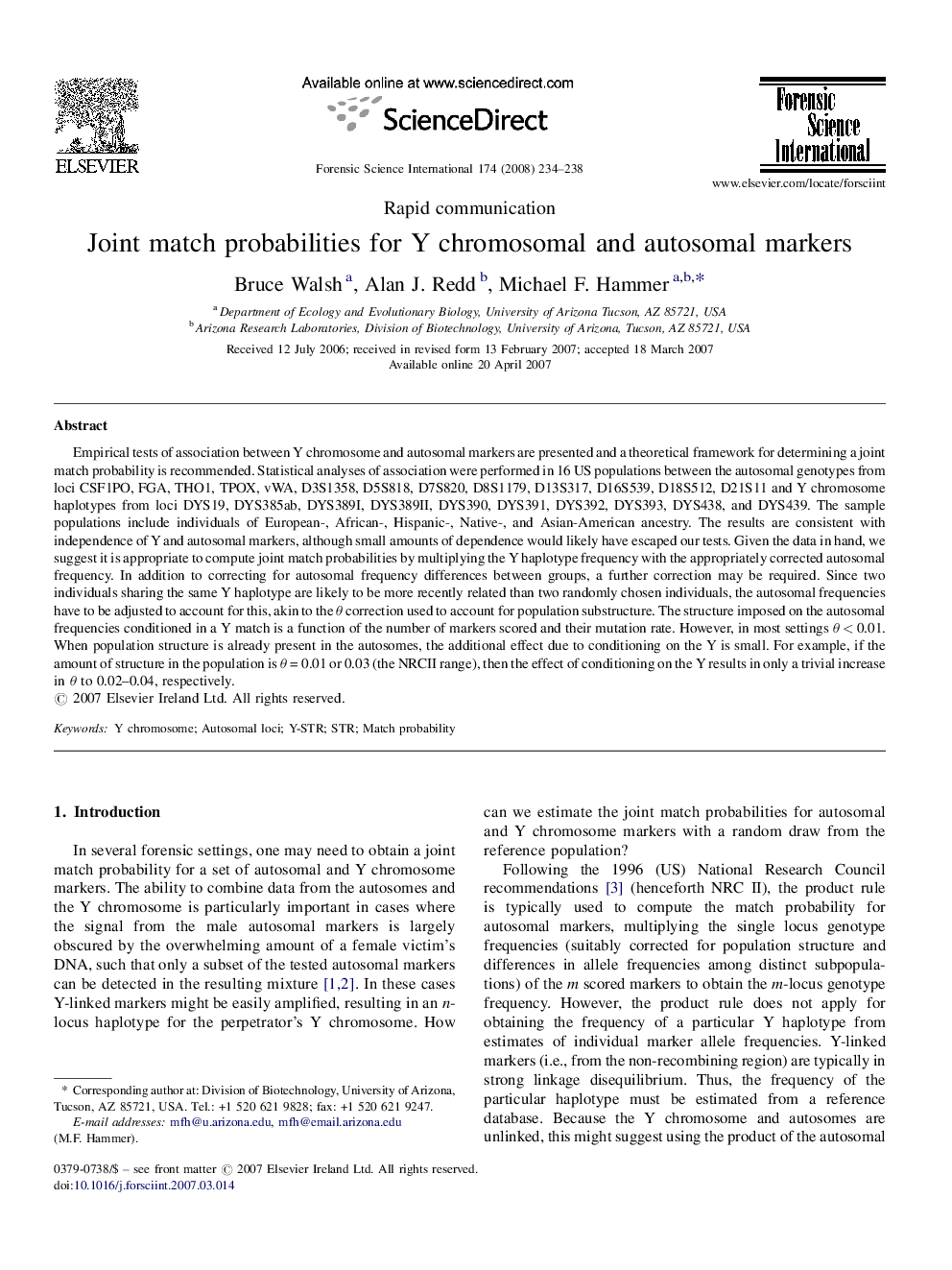| کد مقاله | کد نشریه | سال انتشار | مقاله انگلیسی | نسخه تمام متن |
|---|---|---|---|---|
| 97766 | 160507 | 2008 | 5 صفحه PDF | دانلود رایگان |

Empirical tests of association between Y chromosome and autosomal markers are presented and a theoretical framework for determining a joint match probability is recommended. Statistical analyses of association were performed in 16 US populations between the autosomal genotypes from loci CSF1PO, FGA, THO1, TPOX, vWA, D3S1358, D5S818, D7S820, D8S1179, D13S317, D16S539, D18S512, D21S11 and Y chromosome haplotypes from loci DYS19, DYS385ab, DYS389I, DYS389II, DYS390, DYS391, DYS392, DYS393, DYS438, and DYS439. The sample populations include individuals of European-, African-, Hispanic-, Native-, and Asian-American ancestry. The results are consistent with independence of Y and autosomal markers, although small amounts of dependence would likely have escaped our tests. Given the data in hand, we suggest it is appropriate to compute joint match probabilities by multiplying the Y haplotype frequency with the appropriately corrected autosomal frequency. In addition to correcting for autosomal frequency differences between groups, a further correction may be required. Since two individuals sharing the same Y haplotype are likely to be more recently related than two randomly chosen individuals, the autosomal frequencies have to be adjusted to account for this, akin to the θ correction used to account for population substructure. The structure imposed on the autosomal frequencies conditioned in a Y match is a function of the number of markers scored and their mutation rate. However, in most settings θ < 0.01. When population structure is already present in the autosomes, the additional effect due to conditioning on the Y is small. For example, if the amount of structure in the population is θ = 0.01 or 0.03 (the NRCII range), then the effect of conditioning on the Y results in only a trivial increase in θ to 0.02–0.04, respectively.
Journal: Forensic Science International - Volume 174, Issues 2–3, 30 January 2008, Pages 234–238